 W
WAgricultural lime, also called aglime, agricultural limestone, garden lime or liming, is a soil additive made from pulverized limestone or chalk. The primary active component is calcium carbonate. Additional chemicals vary depending on the mineral source and may include calcium oxide. Unlike the types of lime called quicklime and slaked lime, powdered limestone does not require lime burning in a lime kiln; it only requires milling. All of these types of lime are sometimes used as soil conditioners, with a common theme of providing a base to correct acidity, but lime for farm fields today is often crushed limestone. Historically, liming of farm fields in centuries past was often done with burnt lime; the difference is at least partially explained by the fact that affordable mass-production-scale fine milling of stone and ore relies on technologies developed since the mid-19th century.
 W
WAmmonium nitrate is a chemical compound with the chemical formula NH4NO3. It is a white crystalline solid consisting of ions of ammonium and nitrate. It is highly soluble in water and hygroscopic as a solid, although it does not form hydrates. It is predominantly used in agriculture as a high-nitrogen fertilizer. Global production was estimated at 21.6 million tonnes in 2017.
 W
WIn agriculture, gardening, and landscaping, barkdust is a form of mulch produced out of chipped or shredded tree bark. Coarser forms of barkdust may be known as bark nuggets. Trees typically used in the production of barkdust include the Douglas fir and the Western hemlock.
 W
WBiochar is charcoal that is produced by pyrolysis of biomass, yet in the absence of oxygen, and is used as a soil ameliorant for both carbon sequestration and soil health benefits. Biochar is a stable solid that is rich in carbon and can endure in soil for thousands of years. Biochar is being investigated as a means of carbon sequestration, and it may be a means to mitigate global warming and climate change. It results from processes related to pyrogenic carbon capture and storage (PyCCS).
 W
WBioenergy Europe is a European trade association open to national biomass associations and bioenergy companies active in Europe. It was founded in 1990 under the leadership of French senator Michel Souplet with the aim to promote energy generation from biomass - in all its forms: biopower, bioheat, or biofuels for transport. Bioenergy Europe is the umbrella organisation of the European Pellet Council (EPC), and the International Biomass Torrefaction Council (IBTC).
 W
WBokashi is a process that converts food waste and similar organic matter into a soil amendment which adds nutrients and improves soil texture. It differs from traditional composting methods in several respects. The most important are:The input matter is fermented by specialist bacteria, not decomposed. The fermented matter is fed directly to field or garden soil, without requiring further time to mature. As a result, virtually all input carbon, energy and nutrients enter the soil food web, having been neither emitted in greenhouse gases and heat nor leached out.
 W
WBuštěhrad slag heap is a huge artificial hill between municipalities of Kladno-Vrapice, Buštěhrad and Stehelčeves near Kladno in the Central Bohemian Region of the Czech Republic that have arisen in the late 20th century as a dumping site for slag from the Kladno ironworks, and other industrial waste. This is one of the most massive heaps of Kladno area, which, particularly when viewed from the northeast, forms by far visible and noticeable part of the landscape in shape of a mesa.
 W
WCharcoal is a lightweight black carbon residue produced by strongly heating wood in minimal oxygen to remove all water and volatile constituents. In the traditional version of this pyrolysis process, called charcoal burning, the heat is supplied by burning part of the starting material itself, with a limited supply of oxygen. The material can also be heated in a closed retort.
 W
WCompost is made by decomposing organic materials into simpler organic and inorganic compounds in a process called composting. This process recycles various organic materials otherwise regarded as waste products. A good compost is rich in plant nutrients and beneficial organisms.
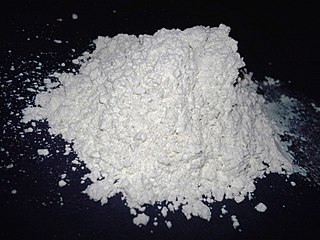 W
WDiatomaceous earth, diatomite or kieselgur/kieselguhr is a naturally occurring, soft, siliceous sedimentary rock that has been crumbled into a fine white to off-white powder. It has a particle size ranging from less than 3 μm to more than 1 mm, but typically 10 to 200 μm. Depending on the granularity, this powder can have an abrasive feel, similar to pumice powder, and has a low density as a result of its high porosity. The typical chemical composition of oven-dried diatomaceous earth is 80–90% silica, with 2–4% alumina and 0.5–2% iron oxide.
 W
WDigestate is the material remaining after the anaerobic digestion of a biodegradable feedstock. Anaerobic digestion produces two main products: digestate and biogas. Digestate is produced both by acidogenesis and methanogenesis and each has different characteristics.
 W
WDynamic compaction is a method that is used to increase the density of the soil when certain subsurface constraints make other methods inappropriate. It is a method that is used to increase the density of soil deposits. The process involves dropping a heavy weight repeatedly on the ground at regularly spaced intervals. The weight and the height determine the amount of compaction that would occur. The weight that is used, depends on the degree of compaction desired and is between 8 tonne to 36 tonne. The height varies from 1m to 30m.
 W
WThe Fabaceae or Leguminosae, commonly known as the legume, pea, or bean family, are a large and economically important family of flowering plants. It includes trees, shrubs, and perennial or annual herbaceous plants, which are easily recognized by their fruit (legume) and their compound, stipulate leaves. Many legumes have characteristic flowers and fruits. The family is widely distributed, and is the third-largest land plant family in number of species, behind only the Orchidaceae and Asteraceae, with about 751 genera and about 19,000 known species.
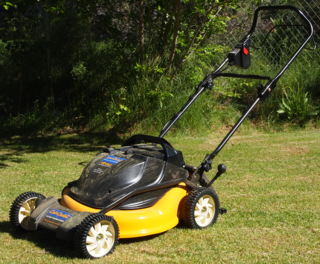 W
WGrasscycling is a method of handling grass clippings by leaving them to decompose on the lawn when mowing. The term combines "grass" and "recycling", and had come into use by at least 1990 as part of the push to reduce the huge quantities of clippings going into landfills, up to half of some cities' summertime waste flow, as 1,000 square feet of lawn can produce 200 to 500 pounds of clippings a year.
 W
WIn agriculture, green manure is created by leaving uprooted or sown crop parts to wither on a field so that they serve as a mulch and soil amendment. The plants used for green manure are often cover crops grown primarily for this purpose. Typically, they are ploughed under and incorporated into the soil while green or shortly after flowering. Green manure is commonly associated with organic farming and can play an important role in sustainable annual cropping systems.
 W
WHügelkultur is a horticultural technique where a mound constructed from decaying wood debris and other compostable biomass plant materials is later planted as a raised bed. Adopted by permaculture advocates, it is suggested the technique helps to improve soil fertility, water retention, and soil warming, thus benefiting plants grown on or near such mounds.
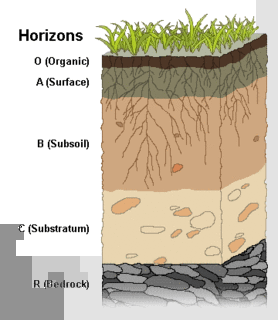 W
WIn soil science, humus denominates the fraction of soil organic matter that is amorphous and without the "cellular cake structure characteristic of plants, micro-organisms or animals". Humus significantly affects the bulk density of soil and contributes to its retention of moisture and nutrients. Although the terms humus and compost are informally used interchangeably, they are distinct soil components with different origins; humus is created through anaerobic fermentation, while compost is the result of aerobic decomposition.
 W
WIsobutylidenediurea (abbreviated IBDU) is an organic compound with the formula (CH3)2CHCH{NHC(O)NH2}2. It is a derivative of urea (OC(NH2)2), which itself is highly soluble in water, but IBDU is not. It functions as a controlled-release fertiliser owing to its low solubility, which limits the rate of its hydrolysis to urea, which is a fast-acting fertiliser.
 W
WLiquid manure is a mixture of animal waste and organic matter used as an agricultural fertilizer, sometimes thinned with water. It can be aged in a slurry pit to concentrate it.
 W
WMacroptilium atropurpureum, commonly referred to as purple bush-bean, or siratro is a perennial legume recognized by its climbing, dense, green vines and deep purple flowers. The plant is indigenous to the tropical and subtropical regions of North, Central, and South America, as far north as Texas in the USA and as far south as Peru and Brazil> It has been introduced for use as a food for stock to many tropical regions around the world. It has become an invasive pest plant in a number of areas, including the north-eastern coast of Australia. Rich in protein, M. atropurpureum is commonly used for cattle pastures intercropped with grass, used in hay, or as a ground cover to prevent soil erosion and to improve soil quality.
 W
WManure is organic matter that is used as organic fertilizer in agriculture. Most manure consists of animal feces; other sources include compost and green manure. Manures contribute to the fertility of soil by adding organic matter and nutrients, such as nitrogen, that are utilised by bacteria, fungi and other organisms in the soil. Higher organisms then feed on the fungi and bacteria in a chain of life that comprises the soil food web.
 W
WMeat and bone meal (MBM) is a product of the rendering industry. It is typically about 48–52% protein, 33–35% ash, 8–12% fat, and 4–7% water. It is primarily used in the formulation of animal feed to improve the amino acid profile of the feed. Feeding of MBM to cattle is thought to have been responsible for the spread of BSE ; therefore, in most parts of the world, MBM is no longer allowed in feed for ruminant animals. However, it is still used to feed monogastric animals.
 W
WN-(n-butyl)thiophosphoric triamide (NBPT) is the organophosphorus compound with the formula SP(NH2)2(NHC4H9). A white solid, NBPT is an "enhanced efficiency fertilizer", intended to limit the release of nitrogen-containing gases following fertilization. Regarding its chemical structure, the molecule features tetrahedral phosphorus bonded to sulfur and three amido groups.
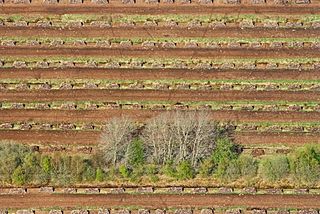 W
WPeat, sometimes known as turf, is an accumulation of partially decayed vegetation or organic matter. It is unique to natural areas called peatlands, bogs, mires, moors, or muskegs. The peatland ecosystem covers 3.7 million square kilometres (1.4 million square miles) and is the most efficient carbon sink on the planet, because peatland plants capture CO2 naturally released from the peat, maintaining an equilibrium. In natural peatlands, the "annual rate of biomass production is greater than the rate of decomposition", but it takes "thousands of years for peatlands to develop the deposits of 1.5 to 2.3 m [4.9 to 7.5 ft], which is the average depth of the boreal [northern] peatlands", which store around 415 gigatonnes (457 billion short tons; 408 billion long tons) of carbon (about 46 times 2019 global CO2 emissions). Globally, it even stores up to 550 gigatonnes (610 billion short tons; 540 billion long tons) of carbon, representing 42% of all soil carbon and exceeds the carbon stored in all other vegetation types, including the world's forests. Across the world, peat covers just 3% of the land’s surface, but stores one-third of the Earth’s soil carbon. Sphagnum moss, also called peat moss, is one of the most common components in peat, although many other plants can contribute. The biological features of sphagnum mosses act to create a habitat aiding peat formation, a phenomenon termed 'habitat manipulation'. Soils consisting primarily of peat are known as histosols. Peat forms in wetland conditions, where flooding or stagnant water obstructs the flow of oxygen from the atmosphere, slowing the rate of decomposition.
 W
WPerlite is an amorphous volcanic glass that has a relatively high water content, typically formed by the hydration of obsidian. It occurs naturally and has the unusual property of greatly expanding when heated sufficiently. It is an industrial mineral and a commercial product useful for its low density after processing.
 W
WPhenyl phosphorodiamidate is an organophosphorus compound with the formula C6H5OP(O)(NH2)2. A white solid, it is used as an inhibitor of urease, an enzyme that accelerates the hydrolysis of urea. In this way, phenyl phosphorodiamidate enhances the effectiveness of urea-based fertilizers. It is a component of the technology of controlled release fertilizers.
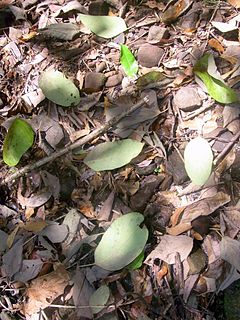 W
WLitterfall, plant litter, leaf litter, tree litter, soil litter, or duff, is dead plant material that have fallen to the ground. This detritus or dead organic material and its constituent nutrients are added to the top layer of soil, commonly known as the litter layer or O horizon. Litter is an important factor in ecosystem dynamics, as it is indicative of ecological productivity and may be useful in predicting regional nutrient cycling and soil fertility.
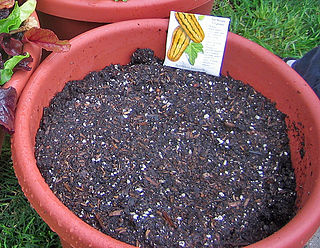 W
WPotting soil, also known as potting mix or miracle soil, is a medium in which to grow plants, herbs and vegetables in a pot or other durable container. The first recorded use of the term is from an 1861 issue of the American Agriculturist.
 W
WSeaweed fertiliser, also spelled seaweed fertilizer, is seaweed that is collected and used as an organic fertilizer.
 W
WSoil conservation is the prevention of loss of the top most layer of the soil from erosion or prevention of reduced fertility caused by over usage, acidification, salinization or other chemical soil contamination.
 W
WSoil fertility refers to the ability of soil to sustain agricultural plant growth, i.e. to provide plant habitat and result in sustained and consistent yields of high quality. A fertile soil has the following properties:The ability to supply essential plant nutrients and water in adequate amounts and proportions for plant growth and reproduction; and The absence of toxic substances which may inhibit plant growth.
 W
WTopsoil is the upper, outermost layer of soil, usually the top 5–10 inches (13–25 cm). It has the highest concentration of organic matter and microorganisms and is where most of the Earth's biological soil activity occurs. Topsoil is composed of mineral particles, organic matter, water, and air. Organic matter varies in quantity on different soils. The strength of soil structure decreases with the presence of organic matter, creating weak bearing capacities. Organic matter condenses and settles in different ways under certain conditions, such as roadbeds and foundations. The structure becomes affected once the soil is dehydrated. Dehydrated topsoil volume substantially decreases and may suffer wind erosion.
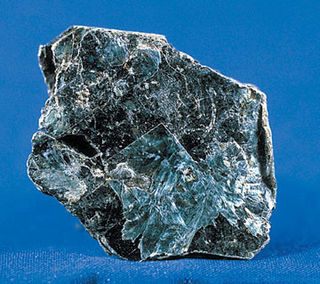 W
WVermiculite is a hydrous phyllosilicate mineral which undergoes significant expansion when heated. Exfoliation occurs when the mineral is heated sufficiently, and commercial furnaces can routinely produce this effect. Vermiculite forms by the weathering or hydrothermal alteration of biotite or phlogopite. Large commercial vermiculite mines currently exist in the United States of America, Russia, South Africa, China, and Brazil.
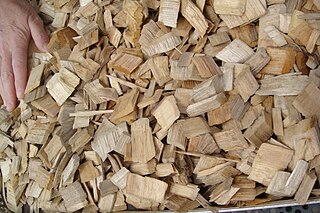 W
WWoodchips are small- to medium-sized pieces of wood formed by cutting or chipping larger pieces of wood such as trees, branches, logging residues, stumps, roots, and wood waste.